
“All the leaves are brown, and the sky is gray. I’ve been for a walk, on a winter’s day.”
The California hills turn green in winter.
Or they used to, anyway.
When I first moved there in ’99, I was thoroughly confused. Where I came from on the East Coast, everything was opposite.
It was hard to wrap my mind around, the way the same hills, emerald in winter, would sere to wheat-gold in summer.
Back then, it rained from November to March.
WTF, I thought?
It’s not like that in Jersey.
But I didn’t move to California from NJ, directly.
I spent two years at UNM in Albuquerque, after graduating college, and the weather pattern there was tricky too.
Each summer, it got so hot, at 5000 ft, you could see heat waves rising off the asphalt. The city is mostly made of concrete, (where it’s not dirt and trees,) creating a heat situation that made people mad.
I called it angry-hot, as road rage incidents rose, tempers were short, and lots of people got shot. (Though the murder rate in the Burque is higher these days.)
I remember hiking in the Sandia Mountains, in October, and the sun was cooking my skin so badly, I had to turn around after 15 minutes.
I shook my fist at the sky.
Literally.
It’s not a turn of phrase.
I actually screamed at the heavens.
“Enough already! It’s October! Give it a rest, will you? For fuck’s sake, it’s Autumn!”
Still, the weather went on as it cared to.
These days, I live at 7000 feet, in a horse pasture outside Taos.
It’s a riparian; a river valley ecosystem, with all sorts of wild nature.
The farm ends in a box canyon; the lands beyond privately owned, but impossible to develop. Thereafter are several miles of completely untouched nature, home to all the mountain creatures you can imagine.
Years ago, the (very) little river split off from the acequia system in a different place, according to my wife, and beyond, lay a waterfall that fed a crystal-clear-pond.
Her magic place.
A paradise.
In the late 80s, the local acequia commission built a small, concrete dam to control the water flow for irrigation, and it killed the pond forever.
We walk back there sometimes, (though part of it’s not on the property,) and I love it just as it is.

There’s a small path between the two waterways, so you hear the gurgling flow. Ancient, volcanic cliffs rise on both sides, with petroglyphs visible in the distance, if you know where to look.
I see it as it is, but not Jessie.
She doesn’t bring it up often, but I’m sure whenever we’re there, in her mind, she misses the untouched perfection of the past.
Leafing through Time Magazine the other day, I noticed an article about the historic drought affecting the American West.
The headline writer, lazily in my opinion, promised a grim future.
Need it be so?
Is this future already written?
Are there no humans among us prepared to plant some fucking trees, and skip the meat once in a while?
Are we truly doomed, with only hyper-rich guys like Jeffrey Bezos and Elon Musk riding their own rockets and space ships to their private colonies on Mars, where they lord over a new society as Emperors, all Hail Emperor Bezos, king of all that is before us! (Or a least half of it, anyway, because the other half belongs to Emperor Musk.)
Wait.
Where was I?
Have we never survived tough times before?
What about the Joads?
Didn’t they flee the dustbowl of Oklahoma for the then-greener pastures of California?
Things looked bleak in the Great Depression, right?
How about that run?
World War 1, a pandemic, a Great Depression, and then another War War, which came with the Holocaust.
People kept going back then, and figured shit out, right?
Maybe, with Climate Change, we will to?
Many years ago, I got an email from a photographer named Bruce Haley.
We kept up a correspondence, and as he lived in Big Sur, where Jessie had family, maybe we’d have a beer one day?
It didn’t happen, and he moved away before I got back in 2016.

Bruce sent me a note last year, about a new book, the first in a two volume series he was working on with Daylight, and the first was about the desolate stretch of the San Joaquin Valley, in California, where he was raised.
They were kind enough to send the book along along, and “Home Fires. Vol.I: The Past” was just right for today.
His excellent, opening essay describes a childhood much like my wife had, and my kids are having. Running around the woods, playing in the ditch, romping around, treating his neighbors’ land like his own.
(His ancestors had come from Oklahoma, like the Joads, with their own major migration.)
Bruce had a secret spot, like Jessie, but it’s not there anymore.
(He also used the word riparian, inspiring me to drop it in earlier in the column.)
But really, to say the book is bleak is an understatement.
Rarely have I seen one that leaned so heavily on a color palette of brown and gray.
Though it was published in 2020, the images were shot in 2014, just as the California mega-drought was building in earnest.
It doesn’t make for pretty viewing, but we need to see what we need to see.
I realized half-way through this was one of those books that chose not to employ fancy design. It was a photo on the right, followed by another, and then another, all in the same shape and size.
Normally, that’s a no-no, unless the pictures are riveting and varied.
These are very good, but not brilliant, so I began to get a bit bored, as I’m inclined to do when books don’t shake it up.
And then… boom.
Something different.
I laughed.
In an odd photo, there are some cement shapes rising up in a pattern, like tombstones, and they’re photographed from behind.
There’s graffiti.
One of little things says “Poop on it.”
Another has a poorly drawn emoji face.
LOL.
Poop on it.
Can you imagine, laughing at such a sad, weary book?
It’s what I call a tension-breaker, when you shake up a run of similar images by giving us something different, tonally.
After that, for a while things stayed consistent in tone, before we see an image of a very racist statue of a Native American. It’s funny because it’s crass, and inappropriate.
That snapped the rhythm.
We move along, and it’s more sadness. Then, a set of tire tracks that went straight, when the road curved, leaving the viewer to imagine the potential car wreck that ensued.
Finally, there’s a great photo of the end of a paved road, with a sign that says End, and yes, the photography ends right there, followed by an essay by Kirsten Rian.
Throughout this book, we see a lot of parched earth, and deep poverty.
It’s a dry California, as far from the glamour of Malibu as you’re gonna get.
Just oil wells on dirt against sad skies.
So to all my California friends and readers out there: I hope it rains like crazy for you this winter.
(But not so much it causes mudslides, and wipes out Highway 1 again.)
To Purchase “Home Fires. Vol.I: The Past” click here

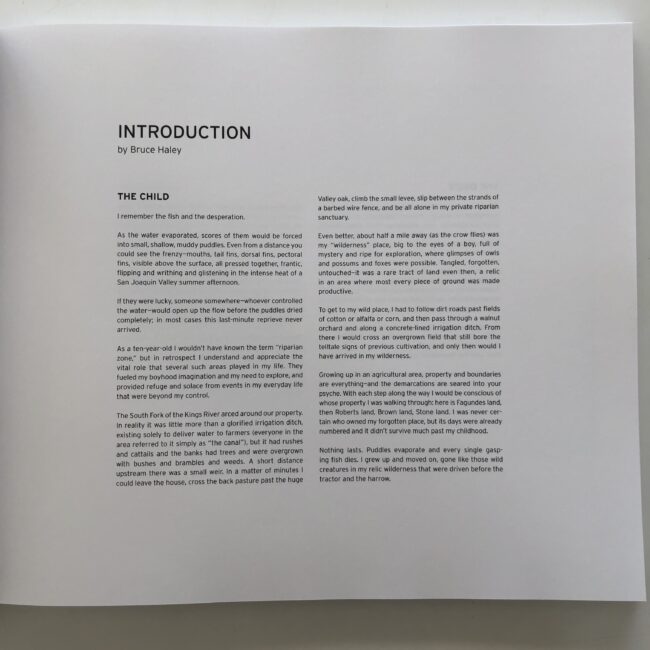
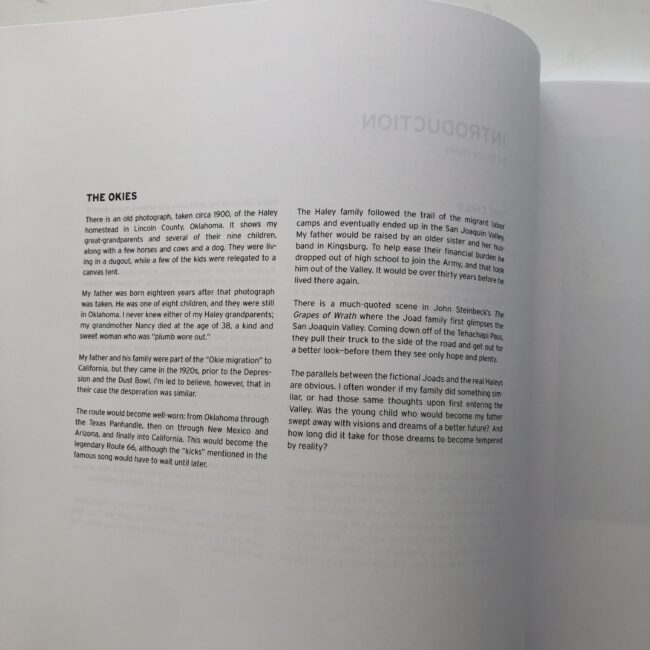
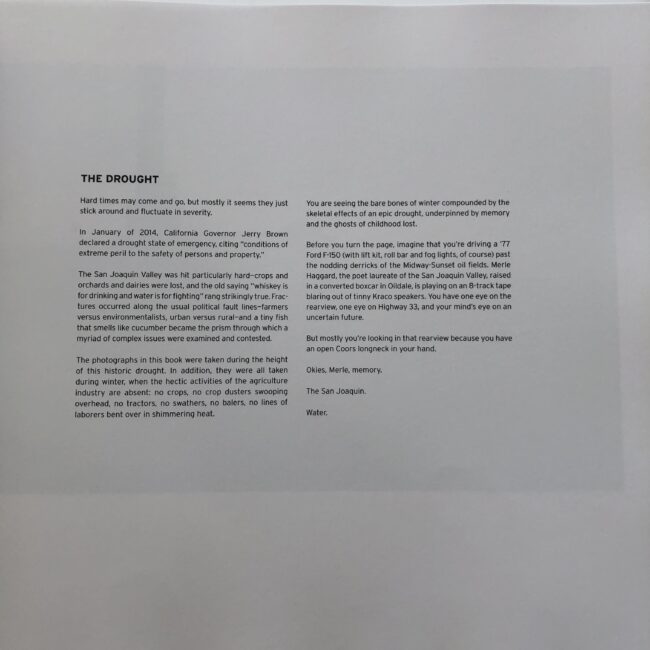
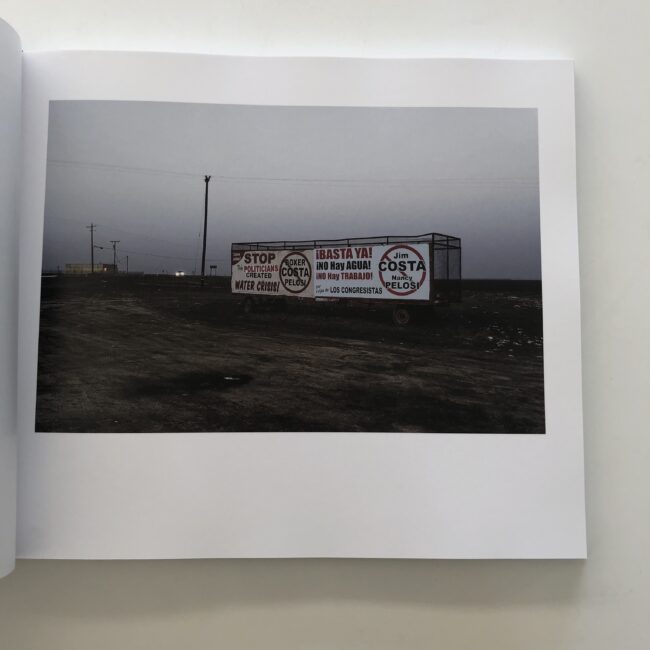
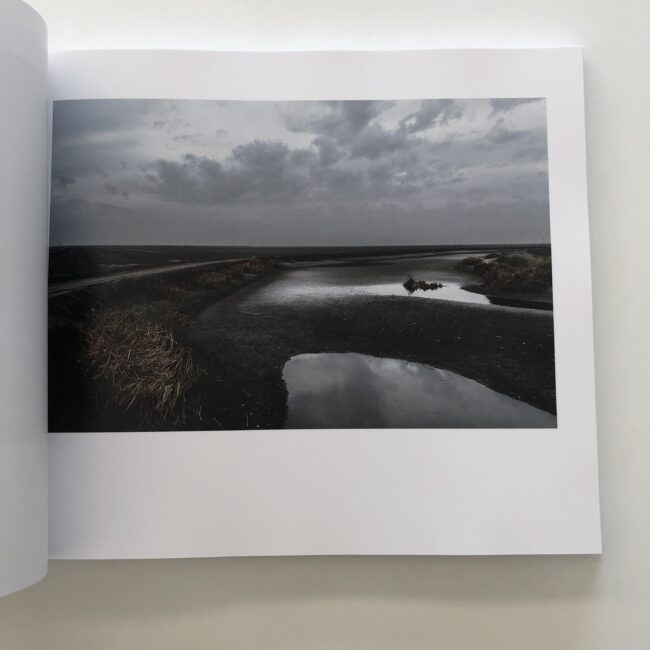
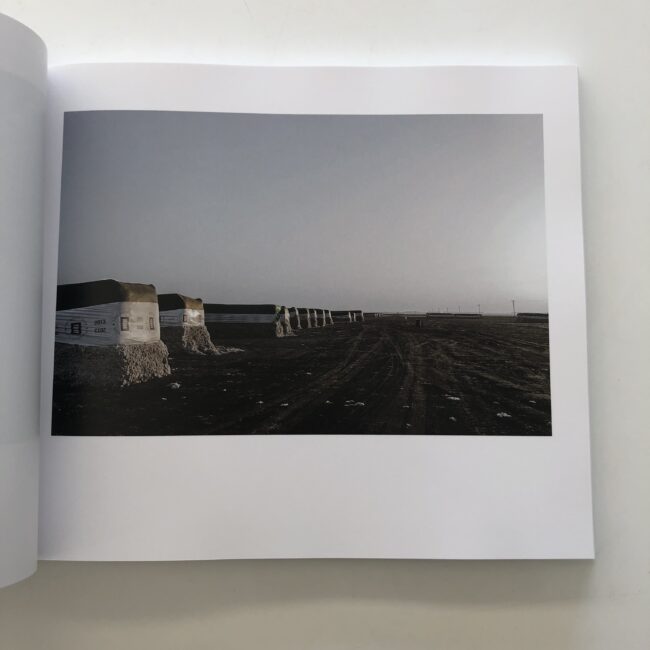
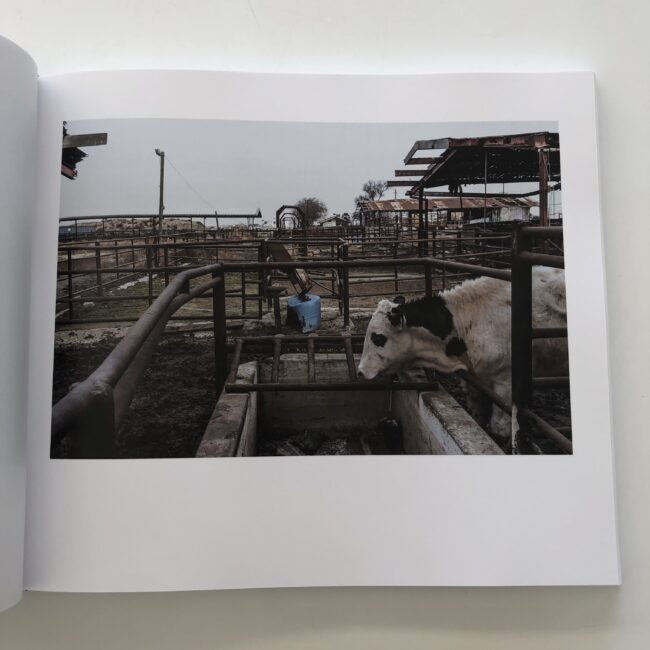
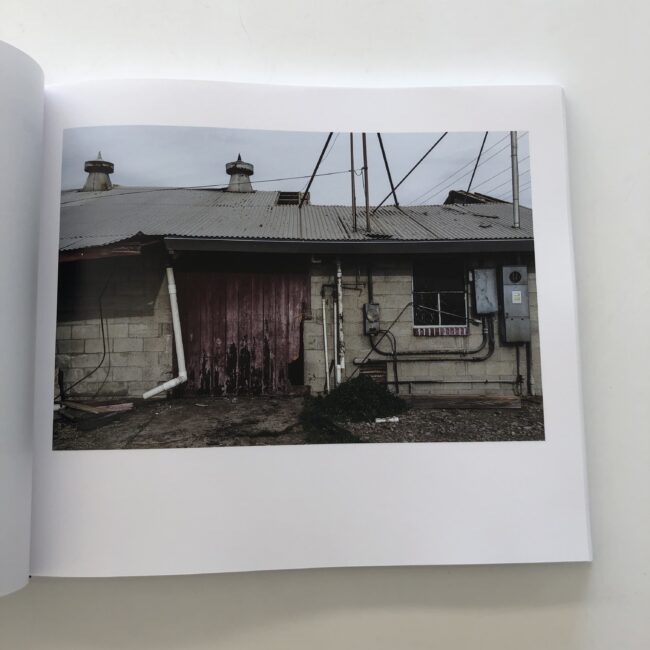
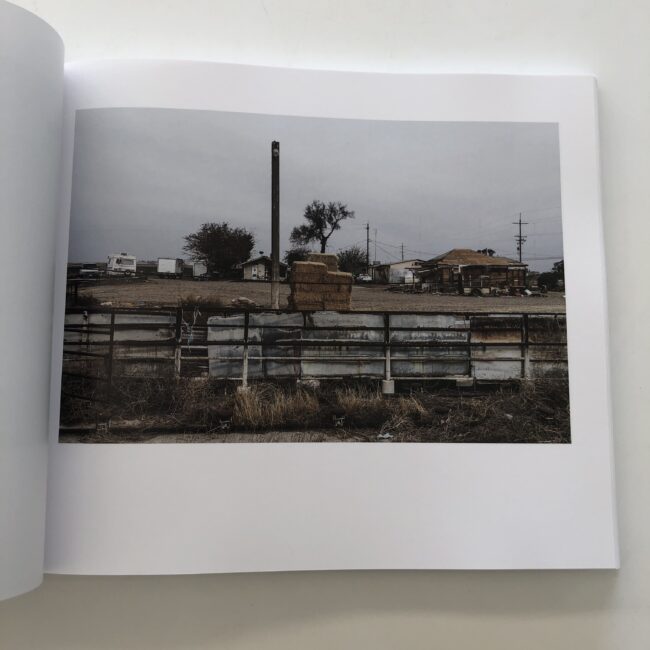

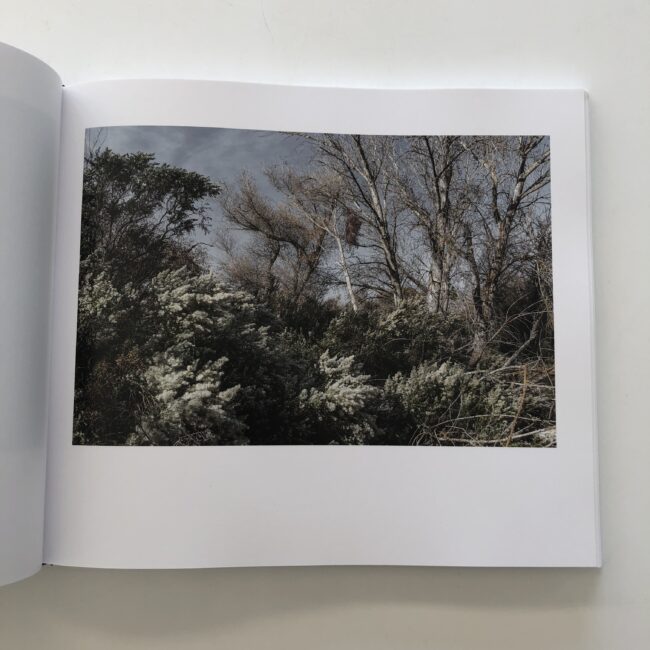
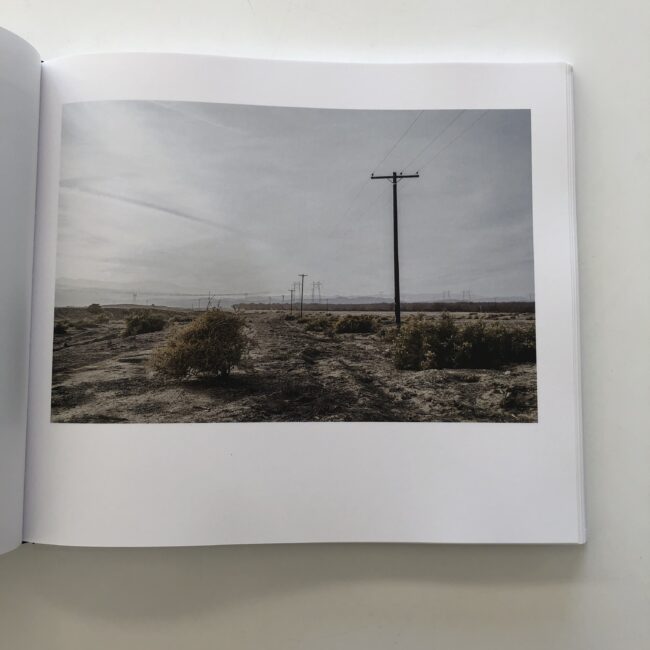
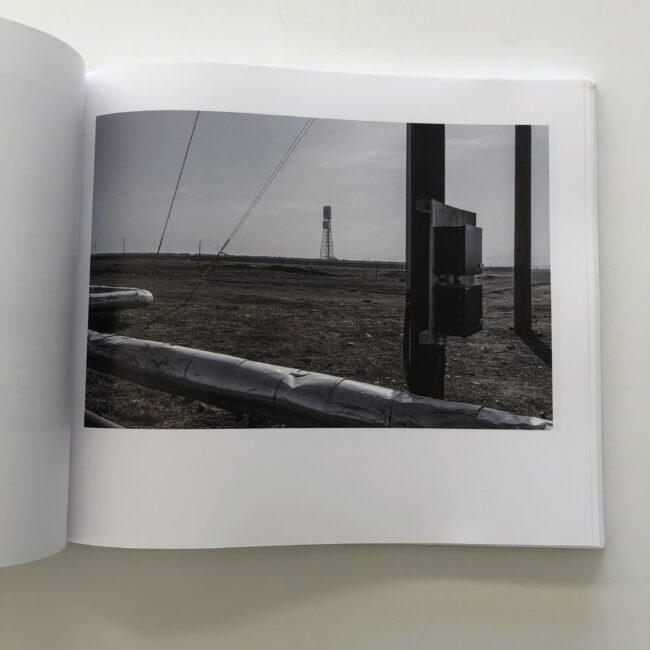

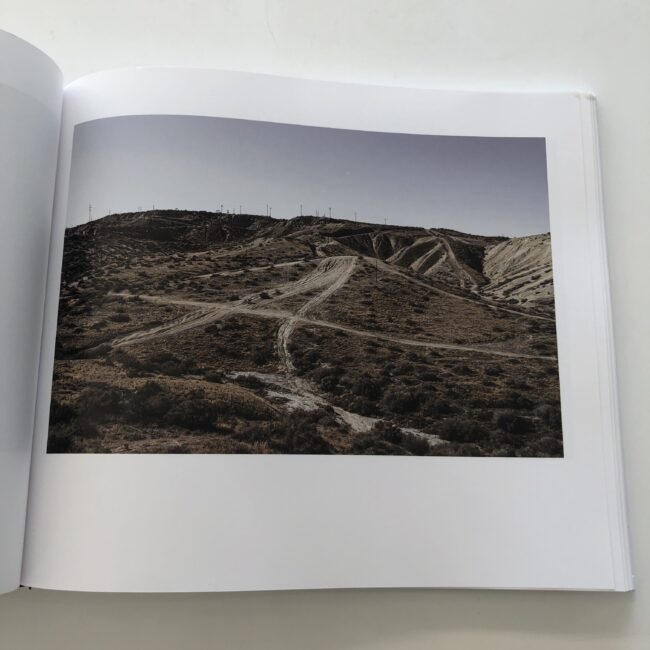
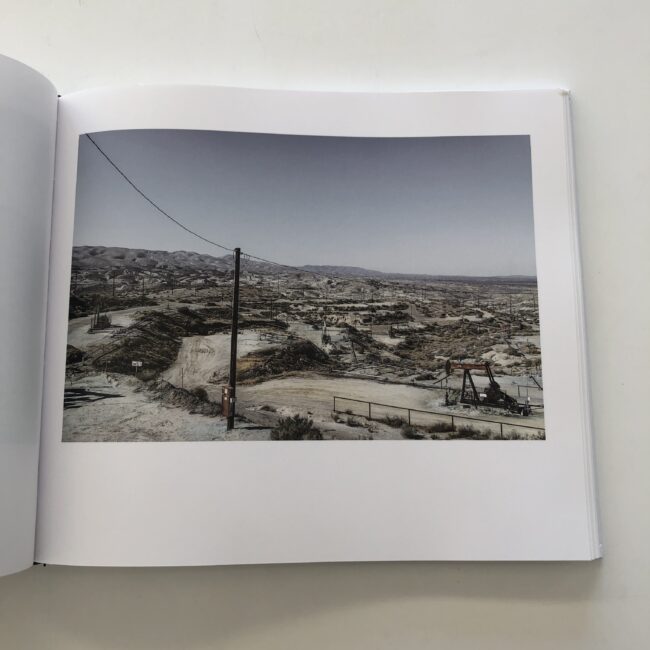
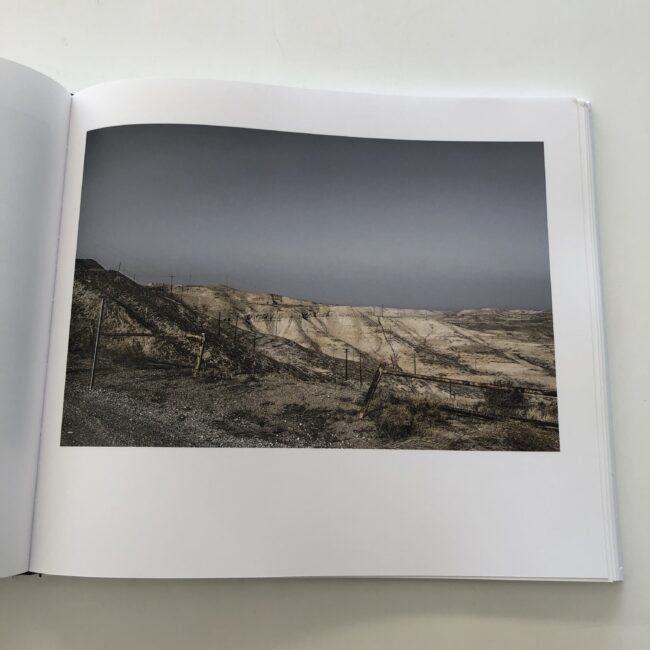

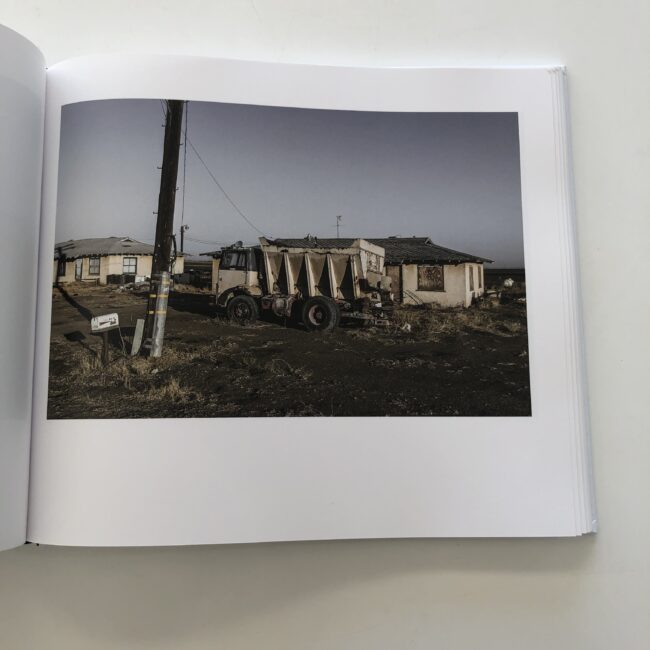
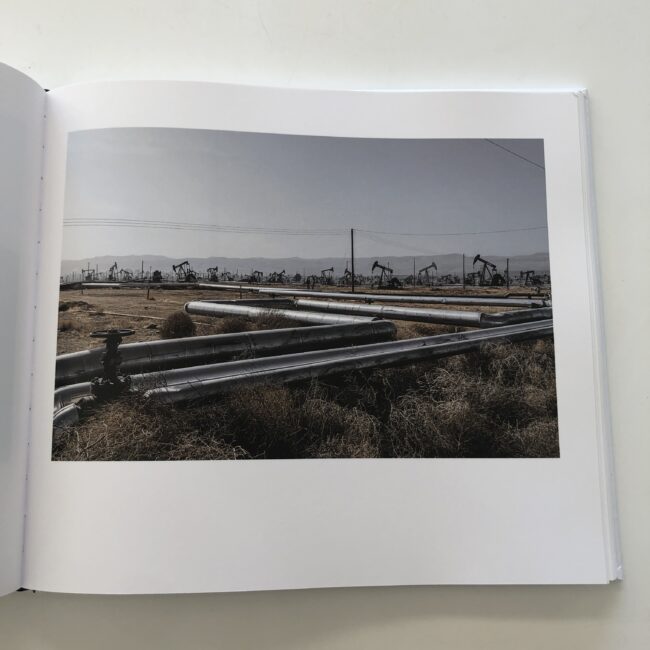
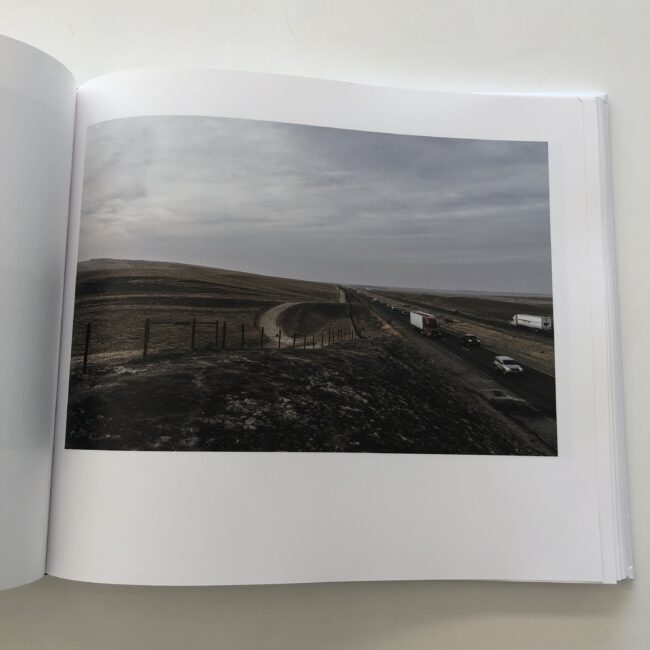

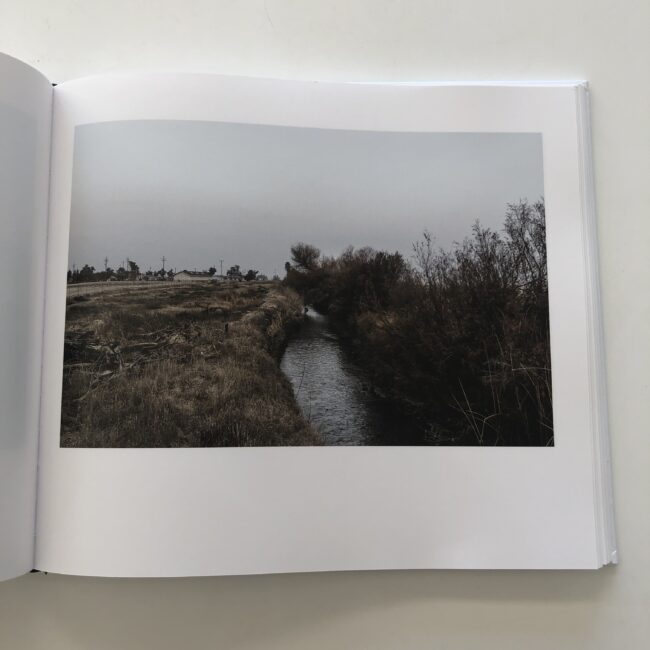
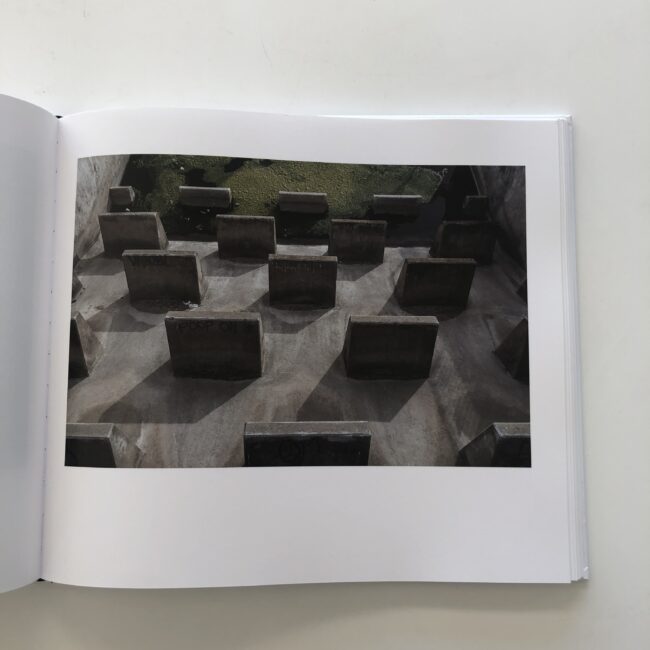

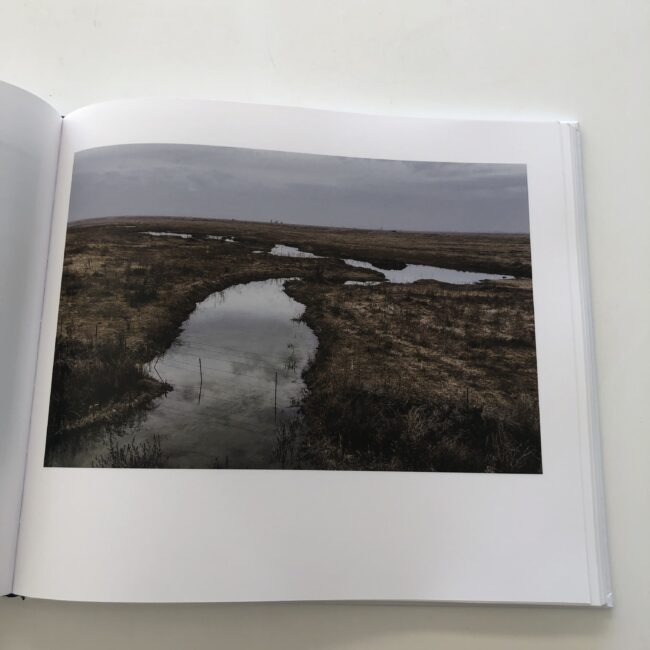
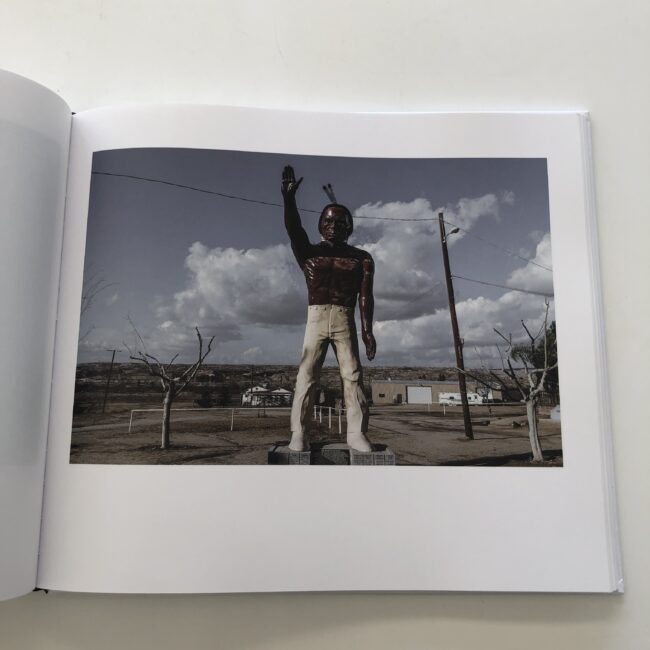

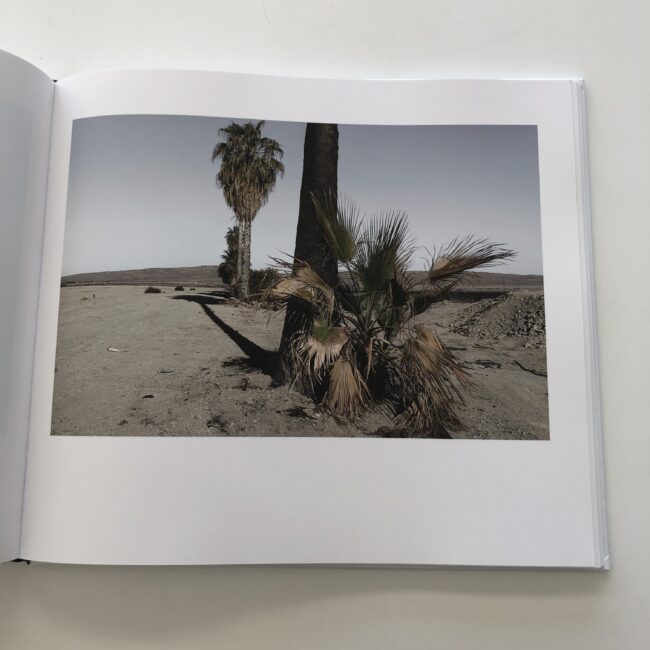
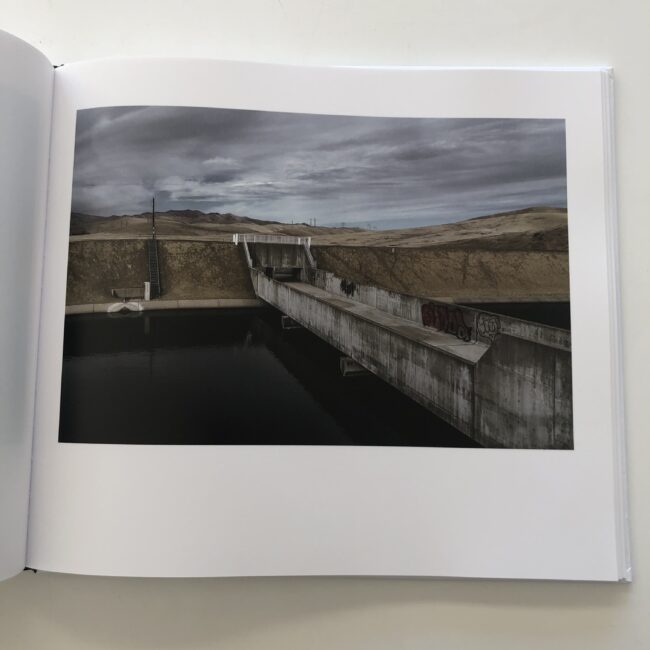

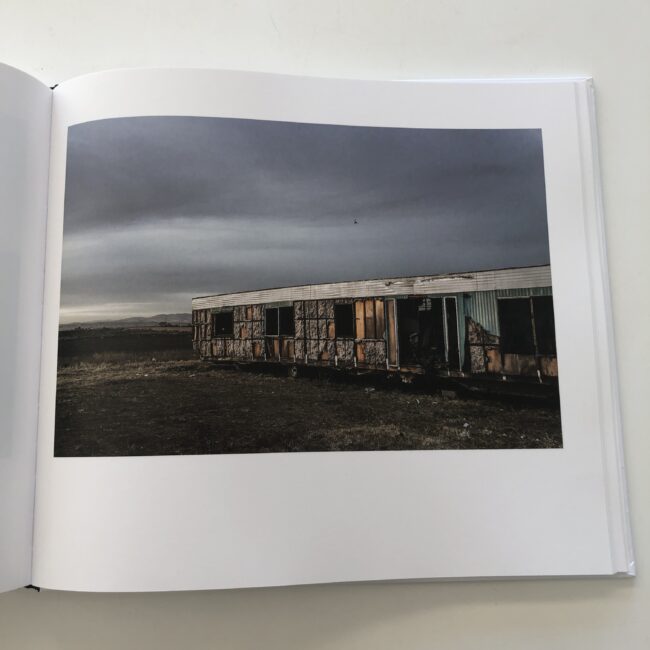
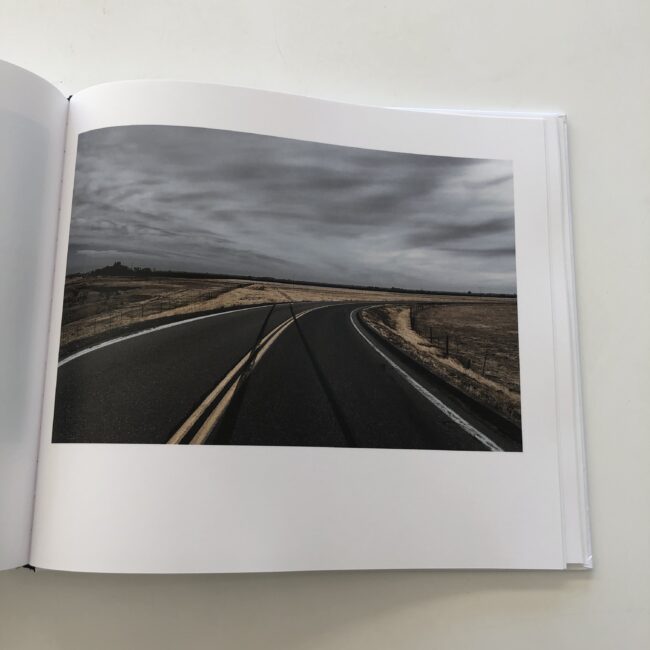
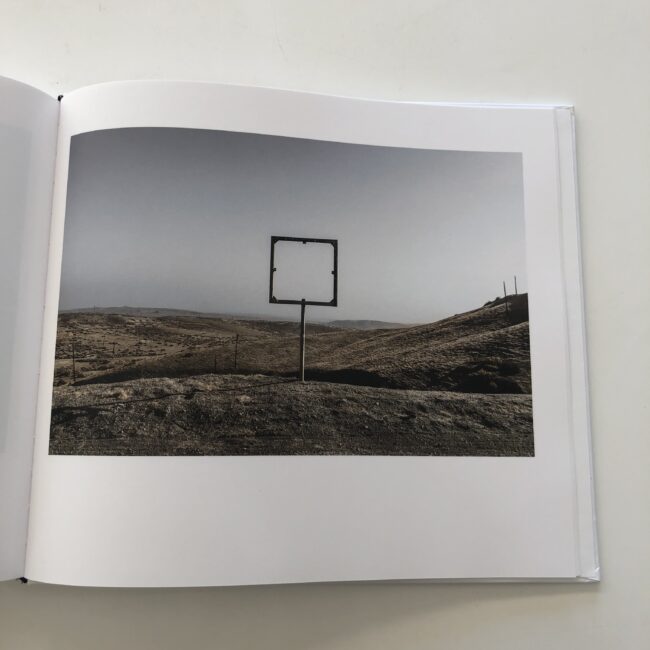
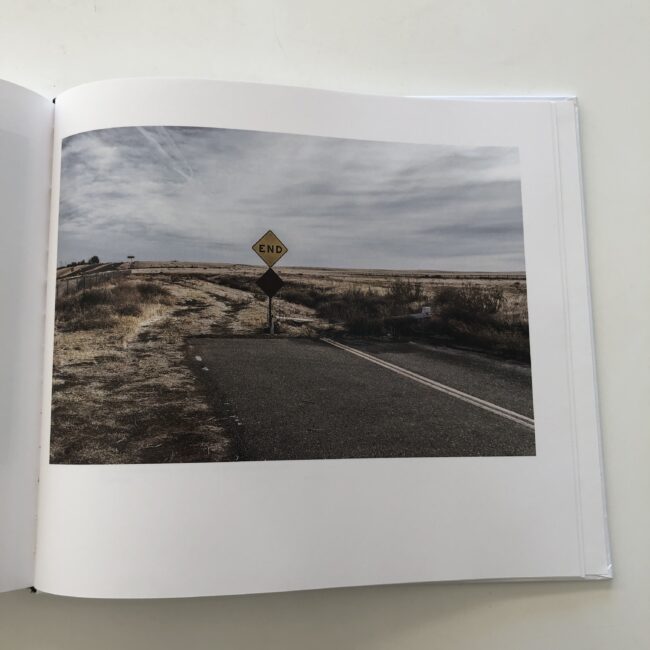
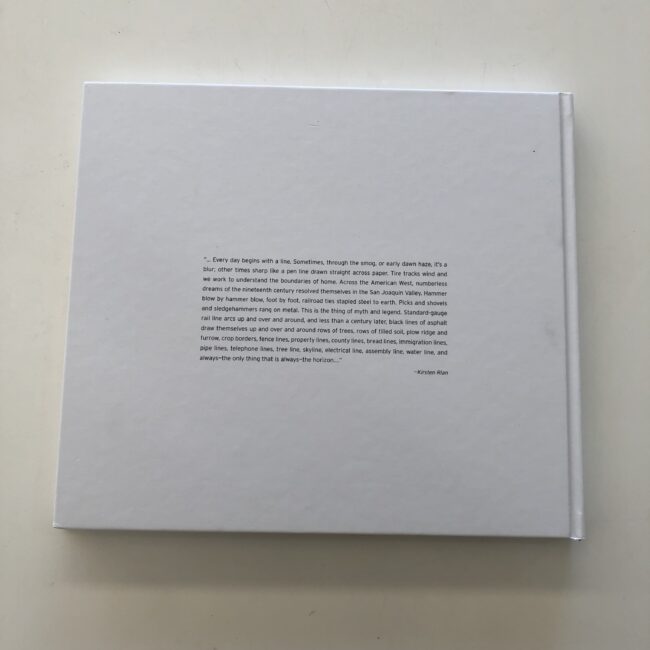
1 Comment
Found this book a rather mesmerizing experience. The very muted color palette strangely allows one to appreciate the images as both color, and B&W; the almost minimalist landscapes, intoxicatingly alluring- the images well served by the clean, conservative presentation that just doesn’t get in the way…
Comments are closed for this article!